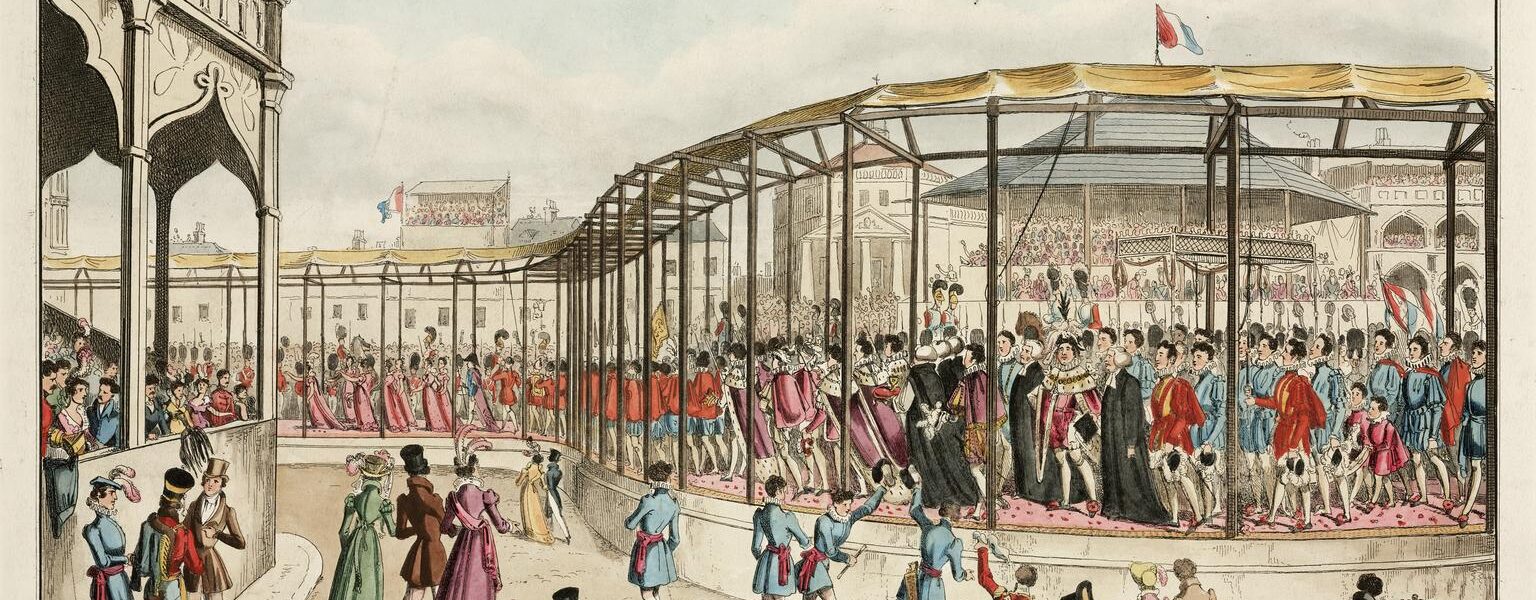Watching historical moments unfold on television is now a routine part of modern life, but it was the coronation of Queen Elizabeth II that cemented television’s place in our living rooms.

British viewers had bought an estimated 2.5 million TV sets by the time of the Coronation in 1953, with more than 20 million gathering around newly purchased television sets to watch grainy, black-and-white images of the coronation on the tiny screens of the day.
More people watched the coronation on TV than listened on the radio, a record for the time. It was the largest outside broadcast ever undertaken at that time, presenting a formidable logistical challenge.
Fitting the large and cumbersome television cameras of the day – such as the Marconi Mark II television camera – into Westminster Abbey was itself an achievement, given the Abbey was filled with over 8,000 guests.

The BBC and its transatlantic partners achieved another technical feat by delivering the ceremony to American and Canadian viewers the same day, with film footage of the ceremony flown from Alexandra Palace to London Airport and then on to North America.
For the first time, people across the country and overseas were able to witness, in real time, the pomp and pageantry of the coronation of a British monarch.

Locomotives have many royal connections, from Queen Victoria’s train to Queen Elizabeth II’s carriage. Railways have enhanced the way monarchs and their families fulfilled their public duties, shaping how the royal family interacted with people across the nation and beyond.
In 1937 the coronation of King George VI inspired the London Midland and Scottish (LMS) railway to name its new streamlined train, Coronation Scot. This named express passenger train was one of the largest and most powerful express passenger locomotives used in Britain.
Coronation Scot ran on the West Coast Main Line non-stop between London Euston and Glasgow Central Station, with a journey time of six and a half hours. Thirty-eight coronation class locomotives were built by LMS, including the Duchess of Hamilton, now part of the Science Museum Group Collection and on display at the National Railway Museum in York.
Another older locomotive with a royal connection is Coronation. It was built by Timothy Hackworth in honour of the coronation of King William IV in 1831.
It’s pictured in a London & North Eastern Railway poster by Doris Zinkeisen, which was produced in the 1937 coronation year. The poster shows Coronation with a train of coaches of different classes, including open carriages, passing through the countryside and watched by four people in a nearby field.

A decade earlier, the coronation procession of His Majesty George IV on 19 July 1821 was captured in this coloured etching by R.H. Laurie, now part of the art collection.
In the distance the hot air balloon of Charles Green can be seen floating overhead during his first balloon ascent. Green would go on to become the most famous UK balloonist of the time, making more than 500 ascents and setting a long-distance record by flying overnight from London to Germany.

How are our museums celebrating the Coronation?
All five museums in the Science Museum Group will be open during the Coronation weekend, however the National Railway Museum and Locomotion will be closed on Bank Holiday Monday.
Highlights across our museums include:
- At the National Science and Media Museum, visitors can take a look through King Charles III life as a young prince through to his investiture of Prince of Wales in a display of images, drawn from the Daily Herald Archive.
- Visitors to the National Railway Museum can watch the Coronation broadcast on a screen in the museum.
- Visitors to the Science Museum’s Information Age gallery can explore the impact of Queen Elizabeth II’s Coronation on the proliferation of television sets.
- At Locomotion, visitors will be able to watch the Coronation broadcast, discover connections between the Royal Family and the railways. Younger visitors can try their hand at making bunting.
